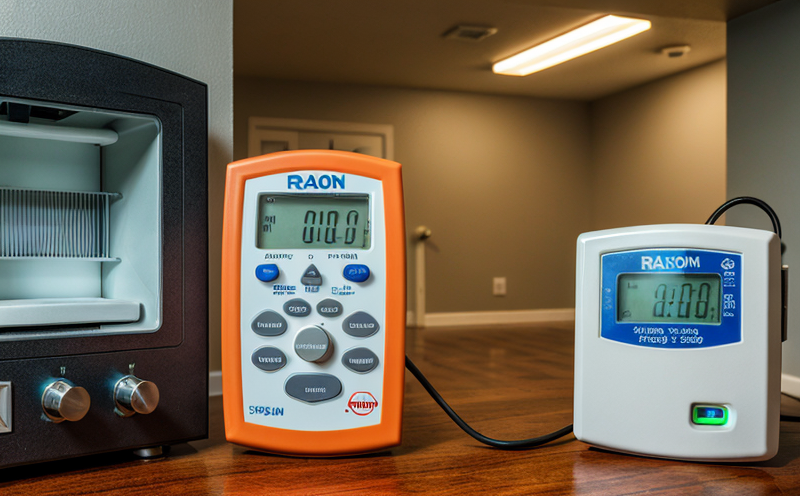ASTM D5072 Passive Sampling of Radon in Indoor Air
The ASTM D5072 standard method is widely used for passive sampling of radon in indoor air. This method provides a reliable and cost-effective approach to measuring radon levels, which are among the leading causes of lung cancer due to their radioactive decay products.
Radon is a colorless and odorless gas that naturally occurs from the breakdown of uranium in soil and rock materials. It can seep into buildings through cracks or other openings in floors, walls, and foundations, leading to elevated indoor concentrations. The measurement of radon levels helps ensure compliance with health standards such as those set by the U.S. Environmental Protection Agency (EPA) and the World Health Organization (WHO).
The ASTM D5072 method utilizes passive samplers that do not require external power sources or continuous monitoring devices, making them ideal for long-term exposure assessments over 90 days. These samplers are typically placed in strategic locations within a building to capture radon gas during its natural diffusion process.
During the sampling period, the samplers collect radon on their internal surfaces through passive diffusion, which is then analyzed using sensitive detection techniques like alpha spectrometry or ionization chambers. This approach allows for accurate quantification of radon concentration levels in various environments, from residential homes to commercial buildings and industrial facilities.
The ASTM D5072 standard specifies detailed procedural steps to ensure consistent results across different sampling sites. Proper installation and handling protocols are outlined to prevent contamination or interference with the measurement process. Compliance with these guidelines is crucial for obtaining reliable data that can inform appropriate remediation actions when necessary.
Compliance officers responsible for indoor air quality often rely on ASTM D5072 as a key tool in their risk management strategies. By identifying potential exposure hazards early, they can implement effective mitigation measures to protect occupants' health and safety. For R&D engineers focused on developing new building materials or designs that minimize radon infiltration, understanding the nuances of ASTM D5072 is essential for optimizing product performance.
Quality managers involved in auditing or certifying compliance with national regulations benefit significantly from proficiency with this standard method. They can ensure that testing protocols adhere to best practices while also validating results against established industry benchmarks.
Industry Applications
- Residential Home Inspections: Many real estate transactions require verification of safe radon levels before finalizing sales contracts.
- Commercial Building Construction: Ensuring compliance with local codes and standards during new construction projects.
- Industrial Facilities: Maintaining occupational health standards for workers exposed to higher than normal ambient air concentrations.
- Rental Properties: Landlords must meet certain thresholds set by regulatory bodies regarding acceptable levels of radon.
Customer Impact and Satisfaction
- Health Protection: By identifying high-risk areas early, this service helps protect occupants from long-term health risks associated with excessive exposure to radon.
- Regulatory Compliance: Ensures that facilities meet all relevant standards set by government agencies and international organizations.
- Cost Efficiency: Early detection through ASTM D5072 can prevent costly renovations later down the line if remediation becomes necessary.
Use Cases and Application Examples
| Scenario | Action Taken |
|---|---|
| A residential homeowner suspects elevated radon levels in their basement. | An ASTM D5072 sampler is installed for 90 days, followed by analysis to determine compliance with EPA guidelines. |
| Before purchasing a commercial property, an investor conducts due diligence on the building's indoor air quality. | A suite of passive samplers are deployed throughout the structure, including offices and warehouses, to evaluate overall radon levels. |
| An industrial plant experiences unusually high employee absenteeism linked to respiratory issues. | Radon sampling is conducted near workstations suspected of contributing to poor indoor air quality. |





